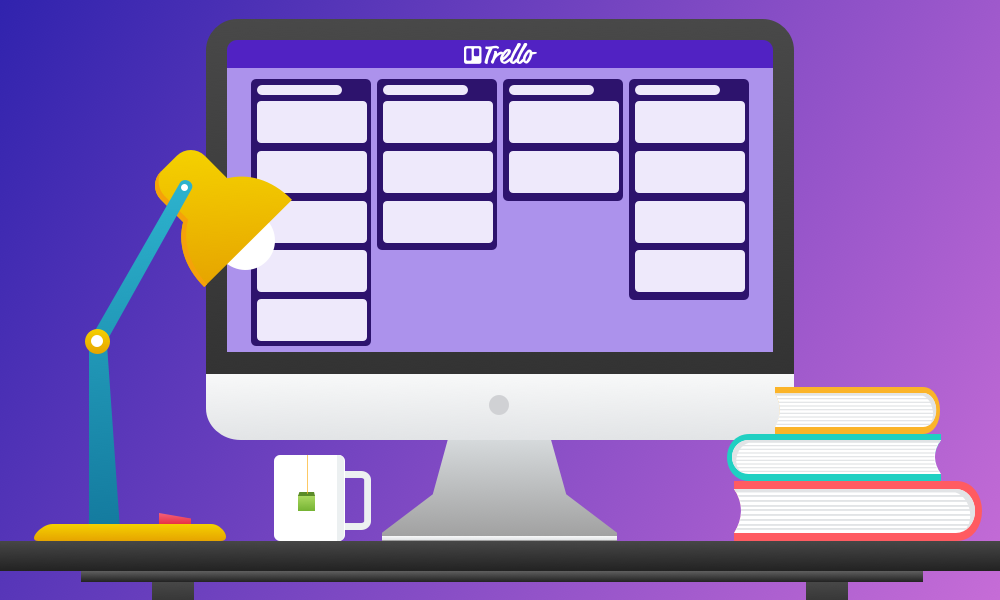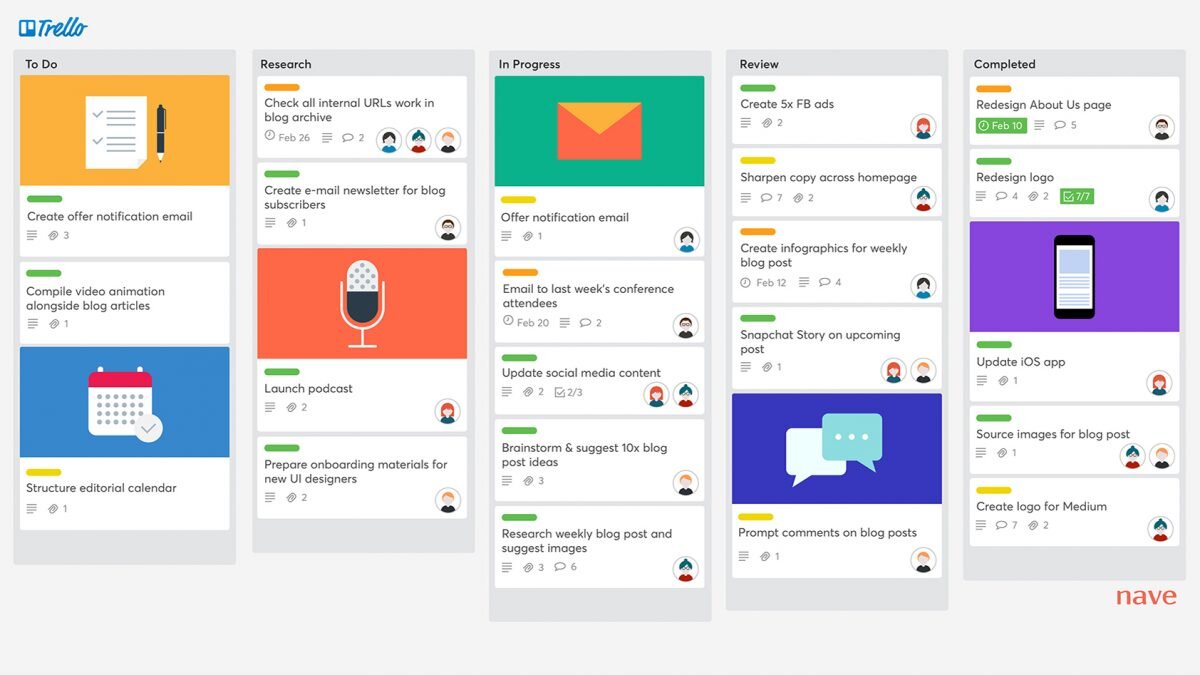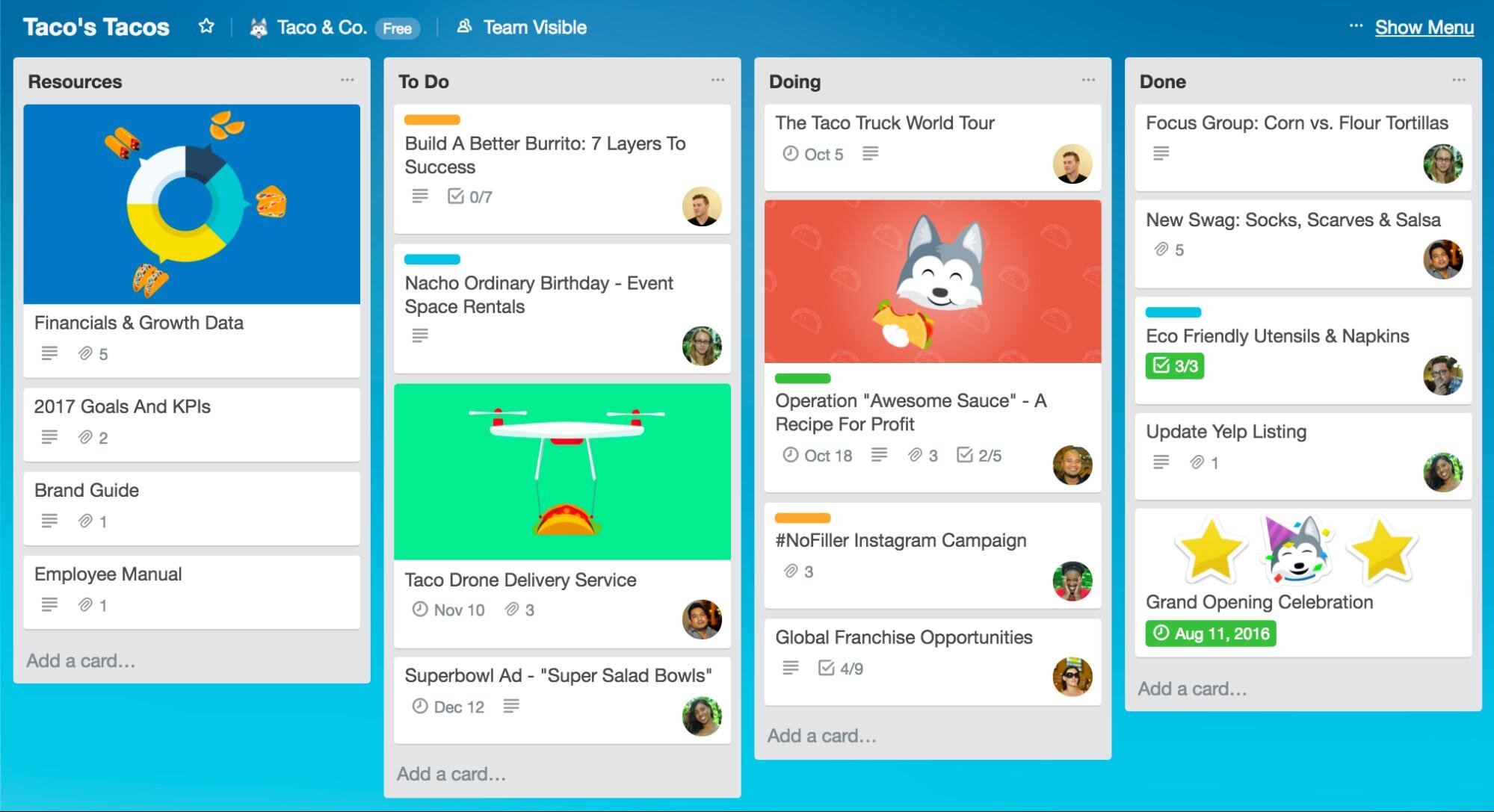by Sid Padki
Bubbly and colorful like a Pixar film, yet powerful and robust like a SpaceX rocket, Trello is a unique Project Management tool that we here at Baltimore Corps use on a daily basis. Originally introduced to our daily practices just for project management, our specific use case has expanded way beyond that. Now, we use it not just to manage projects, but manage meetings, streamline our application processes, track and engage with individuals in our network, and much more.
Baltimore Corps adopted Trello into our normal systems workflow in June of 2019, at first using it in small capacity to test the waters. It was incredibly useful early on to coordinate on meetings; having a singular place you can go to gain all the information that was transferred during the meeting and keep track of any updates along the way became a crucial aspect of our workflow. Trello’s distinct feature set and it’s “no-frills” approach to Project Management alleviated the primary issue most people on the team have when it comes to approaching a new tool: clutter and visual efficiency. With Trello, what you see is everything you need to know about that piece of information. There’s no hidden fields or no multi-layered permissions, just simple cards in a list with details on that card.
Simple as it may sound, those cards can be customized and manipulated in such a way that we have even incorporated using Trellos custom API in conjunction with our new web application portal for our Place for Purpose job placement service. An API, or Application Program Interface, is a set of routines, protocols, and tools for building software applications. Basically, an API specifies how software components should interact. Additionally, APIs are used when programming graphical user interface (GUI) components, which is the way a program looks and feels to use (Beal). Trello’s custom API being used in conjunction with our WebApp, allows us to automate certain functions within Trello so that it is easier to use, and easier to see and track candidates that apply within the program. When someone applies through our Place for Purpose web application platform, a card automatically gets created in a specified Trello board that we use to manage applicants, while some custom fields from the Web Application form get populated within the card so that reviewers can see key information about a candidate at a glance. Out of every other way we use Trello here at Baltimore Corps, integration of this API with our web app has proved to be the most crucial as well as the most unanticipated.
Baltimore Corps strives to advance equity and racial justice citywide by leveraging tools and workflows to best propel our mission and our work forward. Rarely does a new software get implemented within our daily business operations just for the sake of “that tool being the best at product management” or “this new software has been proven to improve productive efficiency by 25%” (just to name a couple cliche examples). If that software doesn’t help propel our mission forward, doesn’t make our day-to-day job easier, and becomes something our team adapts to work around rather than with, then that tool ends up not being widely adopted.
However, Trello doesn’t fall into this category. Trello is a versatile tool for project management and planning that is scalable to work with any size team on any size project. It’s approachable user interface can make it seem underwhelming as a robust tool for planning out projects and managing their progress, however it’s approachability and usability is the very thing that makes it so powerful. It’s easy to get set up with a new project, and it’s easy to pick up right where the team left off on a project that is already ongoing.
Acquiring a new software and implementing it into your current workflow sounds relatively simple on paper. However, it can get difficult when you try and scale that up for an entire organization. Everyone has different ways of doing things and a new tool can just get in the way of daily operations more often than not. If it’s not clear from the beginning on how to use it and what some established standards of procedure are for certain workflows within the tool, then it isn’t going to be widely adopted, if it gets adopted by the organization at all. Getting Trello adopted as part of our core set of software platforms that we use, wasn’t difficult for our organization at all though. It’s simple user-interface and “no-frills” approach to project management allows for any novice to jump right into a project and figure out what’s going on if they take a detailed look around. Underneath that simple exterior lies a robust set of powerful features that are highly customisable, being used to their fullest extent in our case, with Trello’s API working in tandem with our Place for Purpose web application, to help us keep track of candidates as they move throughout the process. At Baltimore Corps, we were skeptical at first about how Trello would work alongside our daily operations, it turns out that it improved on our procedures.
Beal, Vangie. “API - Application Program Interface.” What Is API - Application Program Interface?
Webopedia Definition, www.webopedia.com/TERM/A/API.html.



